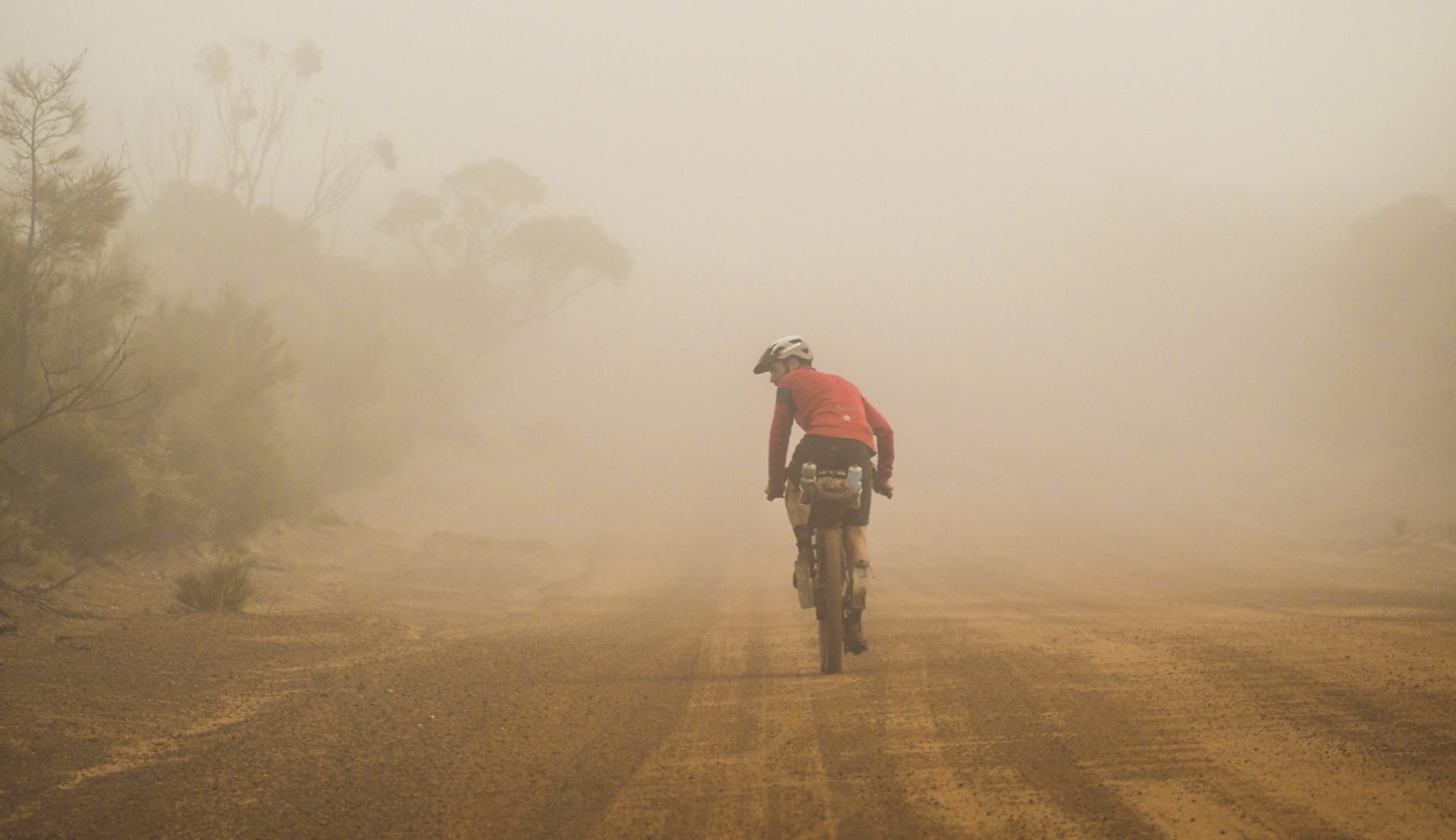Chances are, you’ve heard of Jimmy Ashby.
After all, back in 2019 the then 18-year-old became Australian Geographic’s Young Adventurer of the Year after cycling around the world – a journey of almost 40,000km across 32 countries and four continents.
You might think that after such an epic two-wheeled adventure that a bloke would take it easy for a while, but not Jimmy. After a brief taste of Central Asia on his around-the-world ride, Jimmy was keen to get back over there to further explore the region and its culture… and he had hatched a plan to return.
“I had plans to get to spend three months in Kyrgyzstan and Tajikistan, but then Covid came in and that all got canned, so I had to look local, and that’s been a blessing in disguise,” Adelaide-based Jimmy says.
Although Jimmy has already seen more of the world than many thrice his age, he still hasn’t seen a lot of his own backyard, so he and his riding buddy Chad Freak started poring over maps and searching the web for domestic cycling challenges.
In 2019 Jimmy and Chad did a ‘short’ 2000km ride through South Oz from Adelaide, taking in Port Augusta, Kingoonya, Mount Eba Station, Roxby Downs, Marree and back to Adelaide. This was followed a year later when Jimmy headed north on a ride up through the spectacular Flinders Ranges and along the Birdsville Track to Innamincka, but he still sought something more remote… and significantly more challenging. That’s how he and Chad ended up tackling the Anne Beadell Highway that runs through the Great Victoria Desert.
A few years prior, when Chad was riding the Great Central Road through Laverton, he spotted a sign for the Anne Beadell Highway, which led him to research it when he got back home. According to Jimmy, Chad’s way of thinking was “it’s a line on a map, why wouldn’t you want to ride it?”, and it was this rhetorical question that would eventually lead to the pair taking on one of their toughest challenges to date.
The plan
The Anne Beadell Highway stretches 1350km from Laverton in the Northern Goldfields region of Western Australia through to Coober Pedy in South Australia’s outback. Although called a highway, this outback track was built between 1950s to the early ’60s by legendary Australian surveyor Len Beadell to support the Woomera rocket range, Australia’s first atomic test site. Len named the track after his wife Anne.
“The more you research, the more you learn about it,” Jimmy explained. “We read Len Beadell’s books, and we just became absorbed and in awe of this remote part of the world, of Australia. Very few people travel here compared to other roads like the Oodnadatta or the Birdsville Track.”
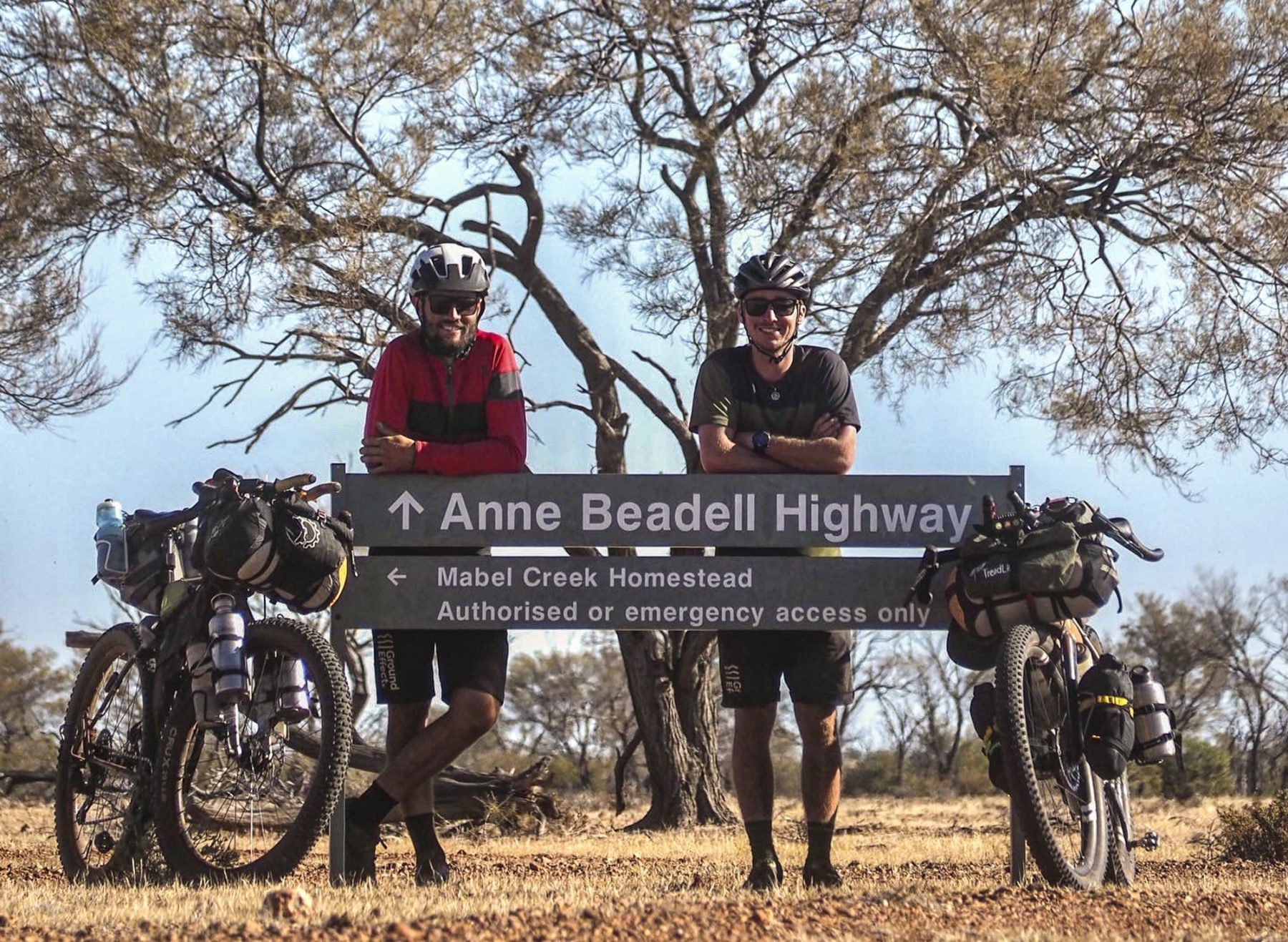
Once Jimmy and Chad decided to tackle the Anne Beadell Highway, they set about planning. They would cover a massive 3000km in total, between Perth and Alice Springs, but it was to be the 1325km Anne Beadell Highway section that would present the big challenge, especially the last 625km or so on the South Oz side of the border where there are no services or supplies, and the track runs through soft desert dunes.
There are many things to consider when planning a trip like this, and the duo spent a fair bit of time online.
“Google satellite images is probably one of the big tools we use,” Jimmy explains. “You can zoom right in and that gives you the quality of roads… and you can see the sand dunes.
“And four-wheel drivers are awesome at reporting things online to their blogs, which is perfect, so we’d scour the Internet, go to blogs, look at maps, read books… planning for it was different… it was like a proper expedition, those eight days out on the Anne Beadell. We would be remote and alone and we knew if we didn’t plan it to a tee that things were going to go wrong supply-wise.”
The supplies list is long for any outback expedition, but the problem cyclists face is carrying that gear – food, water, camping equipment, spares, tools – without overloading the bikes.
“It’s a fine line, because the more you carry the slower you go, but the less you carry the faster you go, so that was kind of our approach to it,” Jimmy says. “We’ve both done a lot of endurance racing and Chad’s done a lot of adventure racing… we kind of looked at it like a race… we went for light and fast.
“We knew we could put big days in on the saddle and it just meant we would be carrying less, so the big thing was knowing our capabilities through previous trips together, or personal expeditions; we’ve learnt how little we can get by with, food or water or even camping-wise.”
The ride
The ride started in Perth and the pair spent a week covering the 1100km to Laverton, part of which was through some challenging mud along the Holland Track. They tracked beside the Kalgoorlie-Perth pipeline before riding through station country to Laverton and the start of the Anne Beadell Highway.
Jimmy says from here the crossing was basically split into two halves; the initial Western Australia half predominantly spinifex country, with a reasonable road surface that had been serviced three years prior, and the second South Australia half mostly dune country, on an overgrown track that had never been serviced since Len Beadell forged it 60 years ago.
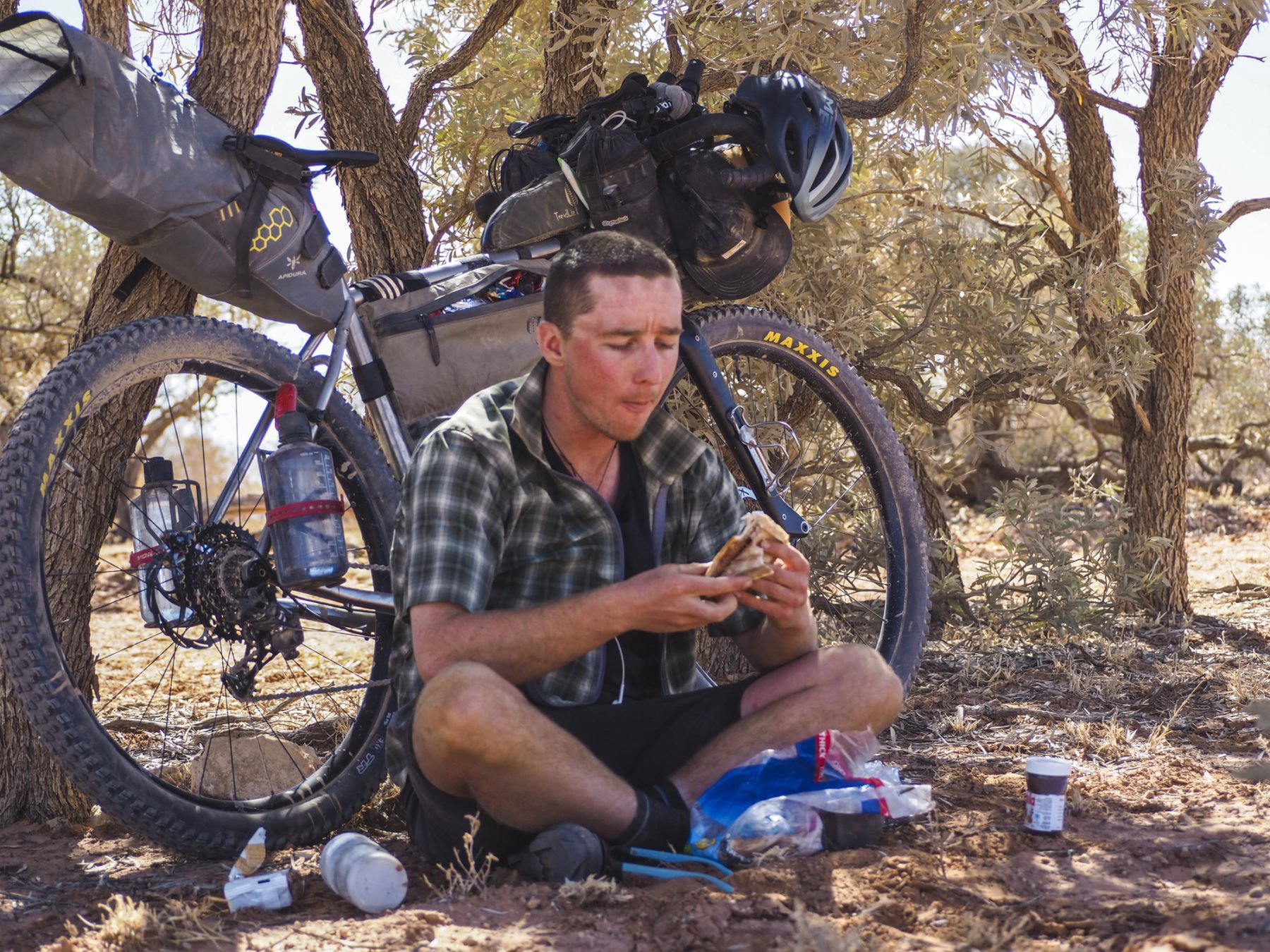
“We kind of went into it looking to do about 200km a day for the seven to eight days that it would take us, and we were fortunate to have tail winds the first few days, so that just blew us along, but then the roads just turned to hell, they just became awful, and our progress just slowed big time,” Jimmy explains.
“For that first few days up until the WA/SA border, there were a few tanks [along the route], so water-wise we weren’t having to carry the 25 litres we had to for the final stretch, so we actually had lighter bikes at the start.
“It was from the SA border where we then had 620km of nothing, and our bikes got loaded up with 25 litres of water, and that’s when the roads became their worst and things got pretty tough out there.
“It hit us pretty hard. I think our bikes were close to 55kg. We were riding sand dunes, up and down, and corrugations…”
To cope with soft sand, Jimmy and Chad ran wide three-inch tyres at low pressures. “You run them until you’re just about to rim out on the ground, like a four-wheel drive tyre, just giving you that extra grip… either that or a placebo effect.”
Of course, running such low pressures makes the tyres more susceptible to damage on rough and overgrown tracks, and it was this that almost brought the duo undone.
“Out there, there are a lot of thorns and three-corner jacks that took us by surprise, and at the end we had probably 500 prickles in each of our [tubeless] tyres, and were constantly pumping them up and putting new sealant in. We were out of spare sealant come the end of the trip, and that could have been a ride-ender… it was a scary moment. We felt like Len Beadell, constantly pumping up tyres every 10km; we thought it was great,” Jimmy jokes.
Most of the other mechanical problems on the trip were caused by corrugations. “All our bottle cages just rattled loose, I had a front axle just fall out at one point…”
The pain
It wasn’t just the bikes and the gear that copped a pounding though; this trip was hell on the riders, too: “Physically, we were both in a pretty beaten way by the time we got to Coober Pedy,” he explains. “I had nerve damage through my hands, from the carpal tunnel and the nerve going through the hands, because of the corrugations. For 15 hours a day you’re just whacking on your hands, the pressure is immense, so I came out with my hands not really working. Chad was also in a pretty similar way, just fatigued, tired, sore and shaken.”
The challenges presented by this remote-area trip weren’t limited to life on the bikes. At the end of each day the boys had little to look forward to than a cold meal and a cold night’s sleep.
“As cyclists, we run on food as cars run on petrol or diesel,” Jimmy says. “We didn’t carry a stove simply for that lightweight aspect, as a stove is quite bulky. Chad and I are both fascinated by running on fats, and the keto system, so eating a lot of nuts, a lot of peanut butter, just taking some real fatty foods… and for dinner we’d have cold microwave rice; we weren’t living gourmet, that’s for sure.”
Their camping kit was a lightweight bivvy, a thin sleeping bag, warm jacket, and a pair of thermals; it was tough.
“We’d often have low moments where we’d just look at each other and start laughing, thinking, ‘what the f*** are we doing?’, that subconscious thought of maybe we’ve bitten off a bit more than we can chew, and just having a bit of a laugh about it,” Jimmy says. “Or waking up covered in frost and just some grim mornings, but, in a way, we found humour in that… It’s like, ‘well who else is coming out here on a bike?’”
The highs
While there were certainly moments of self-doubt, Jimmy says there was never a moment when the pair thought they were not going to make it. “There were points where it was pretty hard to keep going, but I think Chad and I both know through experience that it does get better, it’s knowing that if you just keep going it always improves, it always gets better, so having that faith that it will improve, then that sun sets, or we see this beautiful camel, or something changes, and you go from that deep low to suddenly having one of those euphoric moments.”
Despite the inherent dangers of remote-area travel, particularly on a bicycle, it is often the desert solitude that can amplify those euphoric moments. “Chad and I spoke quite a lot of what is our why? Why are we here? And it came down to a love of being in such a remote area.
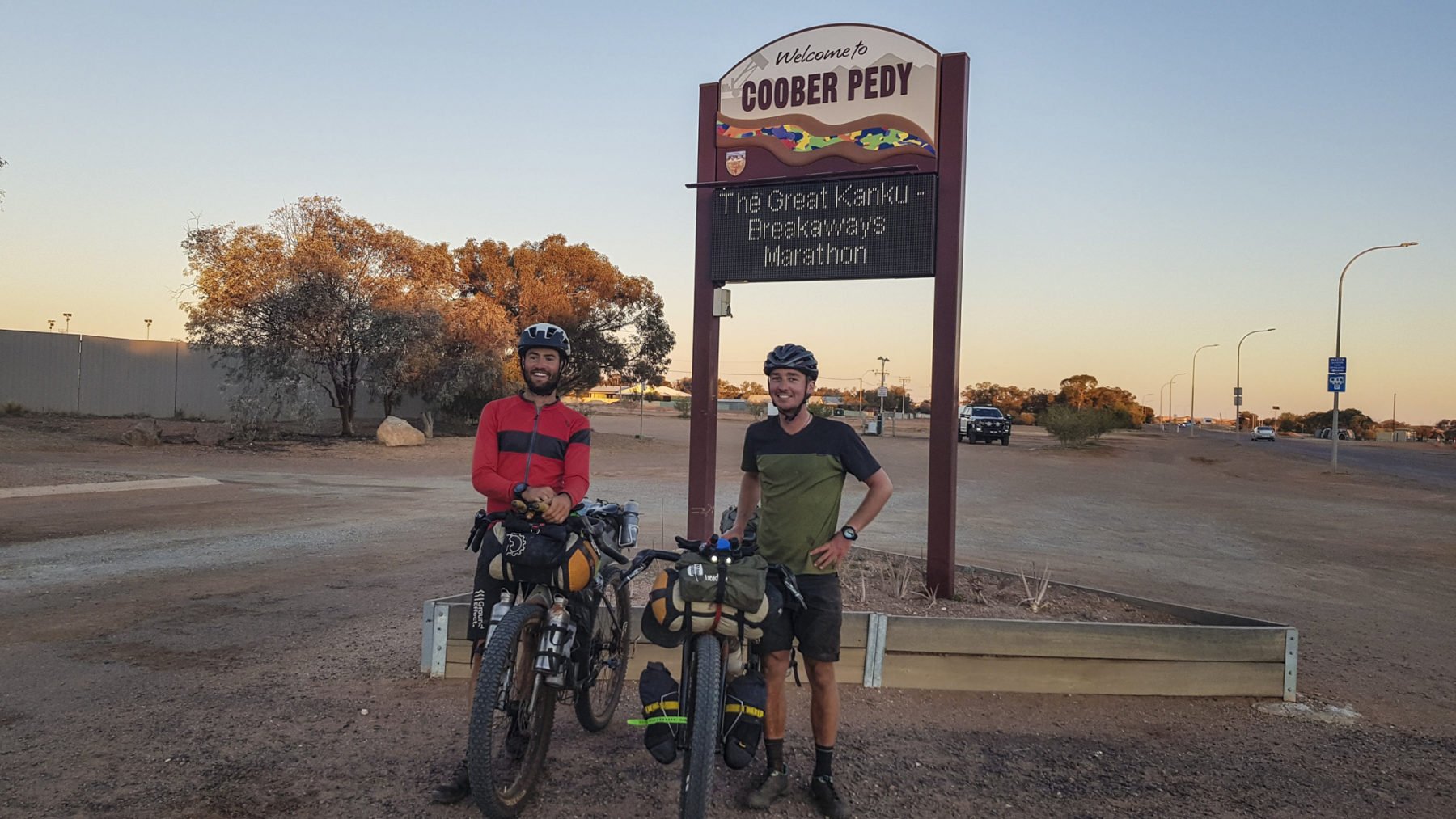
“There were several moments where we just stopped and looked at each other and just thought, ‘yeah we’re out here’. We were so far from anyone and that challenge that it brought, spurred us further, trying to find what could be our limits, where is our breaking point, trying to understand ourselves a bit more and find it in a place of such beauty.”
How do you top that?
Like any adventurer near trip’s end, Jimmy and Chad asked themselves how to top what they had just achieved… and decided they couldn’t. But they aren’t resting on their laurels.
“Chad and I chatted a lot about how to keep going up from here,” Jimmy admits. “How can you go every year and keep topping it? Or the next adventure, how do you make it better?
“Look at the Anne Beadell; how do you get bigger than that? It’s one of the most remote roads in Australia, unless you go do the Canning Stock Route, so we both spoke about how you become content with not topping it, with just taking it easy, or doing something that’s not as extreme, and finding peace at being out there and not pushing yourself to the limit like we pushed ourselves on the Anne Beadell.
“In terms of what’s next, we’re not actually too sure. We joked about a knitting class, or visiting a wine region and just sitting inside a nice cottage and drinking wine and knitting…”
We all know that isn’t going to happen, and Jimmy admits he still has Tajikistan and Kyrgyzstan on his radar. “Absolutely! I’ve got an itch to see Central Asia and the world again that isn’t going to be scratched for a long time.”
“Chad and I are both looking international, we’re really excited for the world to open up, and the adventures that we can look at around the world; it’s definitely quite a big list.”
On his bike: Jimmy’s Curve GMX+
We sat down with Jimmy to discuss his latest ride – a Curve GMX+ – and how having a bike that is designed specifically for long journeys in all conditions is the one bike to rule them all.
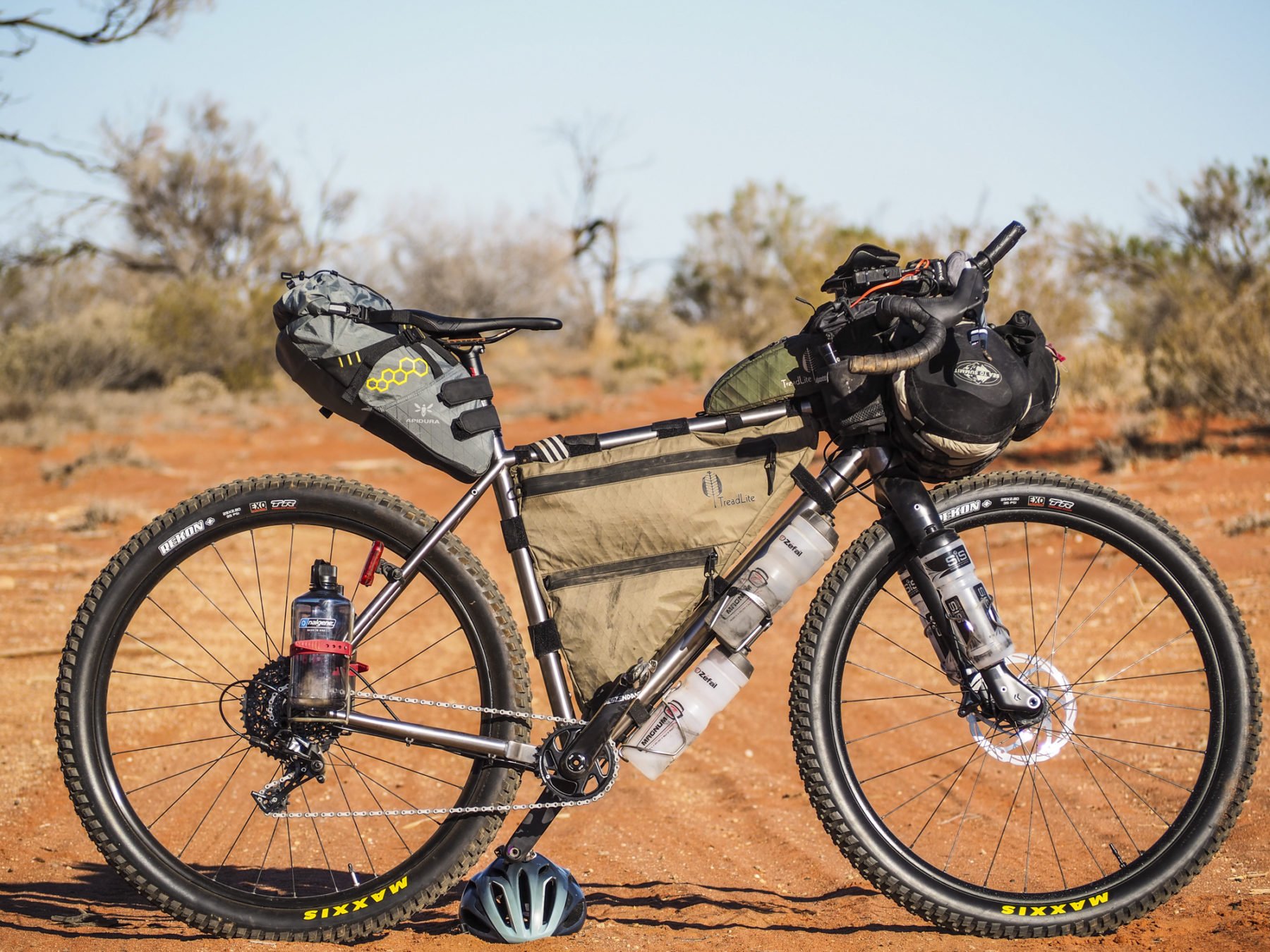
You’ve been riding a Curve Belgie Spirit on your many cycling adventures for a while now, what made you swap over to the Curve GMX+?
The Belgie Spirit and the GMX+ are such different bikes. It’s like comparing a Ferrari to a 4WD Troopie. The bikes have their own personalities and are built for different missions. While I love my Belgie Spirit, and it is the perfect bike for my road riding and touring, it just isn’t capable of taking on the remote desert roads. If I wanted to venture out into the unknown then I needed a bike like the GMX+.
The GMX+ has its own unique fork and this model also comes with Curve’s new Walmer bars. How have you found these on your recent outback rides?
The fork on the GMX + is unique and is essentially what the bike has been designed around. These days you see many MTBs with their suspension fork swapped out with a full rigid one to adapt it to gravel riding. Instead of adapting the fork to the frame, CURVE created the GMX+ around the fork, a 29” full rigid fork allowing for 3” tyres. The bike still rides like a drop bar gravel bike but is so much more capable. The Walmer bars are W I D E, the width makes the drop bars have the control of a MTB handlebar, the room for a large handlebar bag, and so many hand positions for comfort.
The bike has seven cage mounts and a rear rack mount. Plus, you can add numerous other bags to it – have you had it absolutely fully loaded?
It’s always a game trying to fit your life onto a bike and even more so when heading into the desert when you’re going to need days worth of food and water. CURVE has looked at the frame and put as many mounting points on it as it can, allowing for every spare bit of space to be used.
Do you run tubeless tyres and, if so, how do you deal with punctures? Plus what tyres are you running?
I do run tubeless. I use tubeless on every bike I own and wouldn’t have it any other way. The sealant in the tyres has saved me countless times from three-corner jacks, thorns and other road debris. Without it, I would be replacing the tube again and again. I do carry spare tubes for worst-case scenario as well as more sealant and tyre boots. I’m currently running the Maxxis Rekon 2.8”.
The GMX+ has a sweet titanium frame and carbon forks. How have you found it in terms of comfort?
The carbon fork and Ti combination creates such a smooth and enjoyable ride. Being comfortable on the bike is a crucial part of bike touring and having these two things underneath me really does make a difference. Once the 2.8” Tyres are added at a low pressure this is one of the comfiest rides I’ve ever been on, even on the deep, rough corrugations in the desert.
What drivetrain are you running on the bike (gearing, dérailleur, rear cassette, front chain ring, etc.)?
I’m running a SRAM FORCE 1x drivetrain with hydraulic brakes. I’ve had great experience with the SRAM off-road components so it was the clear decision when building this bike up. I have a 10 – 36 Cassette on the back, matched with a 36 on the front allowing for an easy gear to get up the hills! I also have a dynamo hub in my front wheel to power my lights and change up my phone and camera during the day.
How long does it take to load your bike up?
It depends on how quick I need to get out of there! Each morning it takes around 30-45minutes to pack up camp and get moving.
